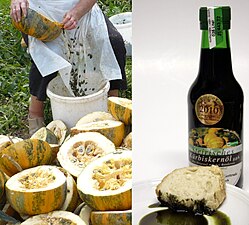The West Styria located in Austria, in the southwest of the state Styria. The area is limited to the east by the Mur and to the south by Slovenia, to the west of Carinthia and in the north of the Gleinalpe ridge.
Regions
The north of the region is mountainous, the south gently undulating hill country and is often called "Austrian Tuscany".
From an administrative point of view, West Styria is divided into four districts:
- Deutschlandsberg district
- Voitsberg district
- City of Graz and the Graz area
- Leibnitz district
places

- 1 Graz
 - is the provincial capital of Styria and the second largest city in Austria. The old town was declared a UNESCO World Heritage Site in 1999 as the best preserved city center in Central Europe.
- is the provincial capital of Styria and the second largest city in Austria. The old town was declared a UNESCO World Heritage Site in 1999 as the best preserved city center in Central Europe.
- 2 Köflach
 -
- - 3 Voitsberg
 -
- - 4 Bärnbach
 -
- - 5 Deutschlandsberg
 -
- - 6 Osterwitz
 -
-

Graz
Osterwitz
Other goals
background
Lignite mining took place around the cities of Köflach and Voitsberg and industrial companies have set up shop. The south is known as "Schilcherland" because of the significant cultivation of this grape variety, which makes a fruity rosé wine. The "Schilcherweinstrasse" connects the towns of Ligist and Eibiswald.
language
In the extreme south of the area one encounters a Slovene-speaking minority.
getting there
The cheapest starting point for driving into the area is Graz.
mobility
The easiest way to visit is with your own car. The entire area is also well served by buses. Two railway lines follow the Graz-Köflacher Bahn from Graz Köflach or Wies bei Eibiswald. (http://www.gkb.at)
Tourist Attractions
The main attraction of the region is clearly the stud of the Spanish Riding School Vienna in Piber Köflach, in which the basic training of the white stallions also takes place, see also below srs.at
In Bärnbach there is the Barbara Church, designed in bright colors by Friedensreich Hundertwasser, with seven gates, six of which symbolize the great world religions and one is dedicated to seekers and non-believers. So far, the attraction has been characterized by the complete absence of mass tourism.
activities
kitchen
The Buschenschank is typical for this region. In addition to farm specialties, these restaurants offer a wide range of wine specialties from the Styrian wine region. A protected trademark is Schilcher, an Austrian rosé wine made from the grape variety Blauer Wildbacher.
The most famous local specialty of Styria is definitely that Pumpkin seed oil. The oil must not be heated and only be used for cold dishes. The nutty taste is unsurpassed and enriches every salad. It is also suitable as a sourvenir to extend the taste of the holiday.
- Beetle Bean Salad (Phaseolus coccineus) is served with onions and lots of pumpkin seed oil.

Pumpkin seed oil

Beetle Bean Salad
- The Pentecost strudel is a traditional yeast pastry, especially in western Styria. It is usually baked at Whitsun and is best known for its sweet and piquant taste. Spicy-tasting lovage is added to the sweet yeast dough. In the real sense, contrary to what the name suggests, it is not a vortex.

Pentecost strudel
nightlife
"Buschenschenken" (taverns) are widespread throughout the region, serving Schilcher and regional cuisine.
security
climate
The south of the area has a milder climate than the rest of Styria.
trips
- Located in the south Slovenia. In the city near the border Maribor (Eng. Marburg) still reminds a lot of the Austrian past.











